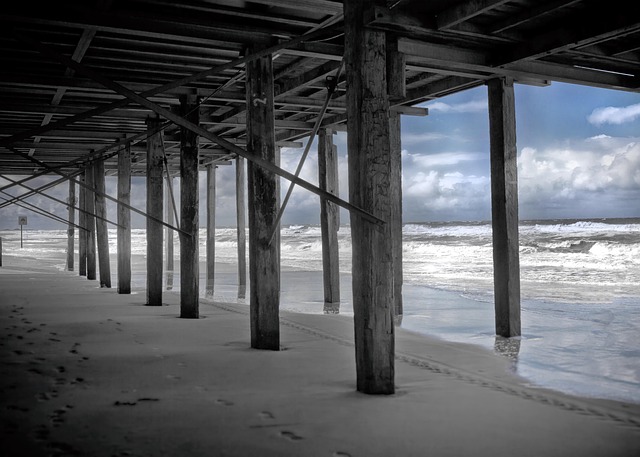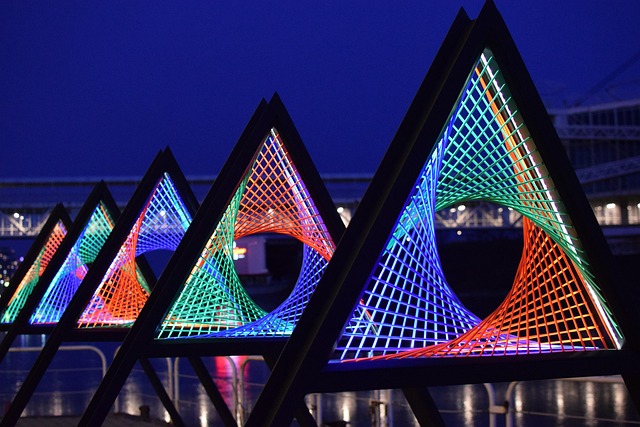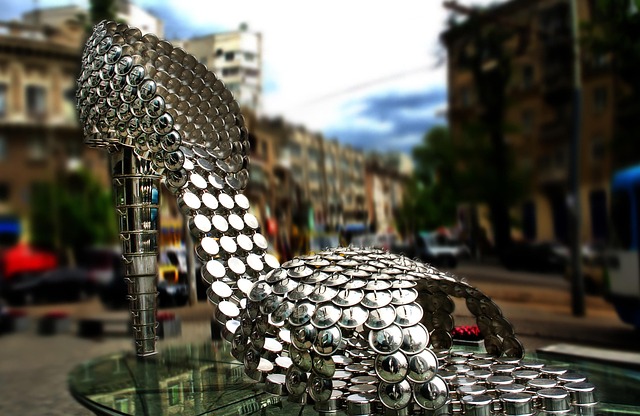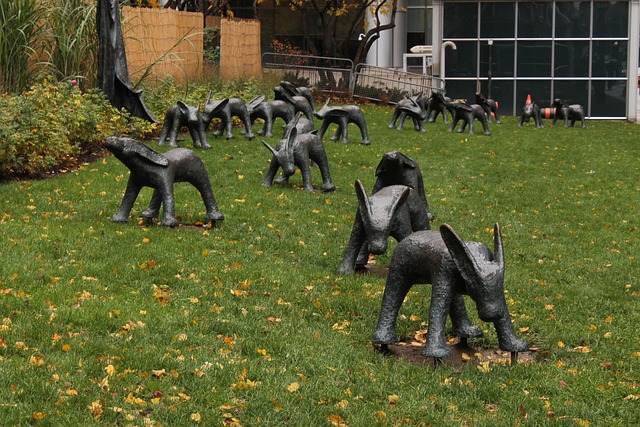Pier installation is a critical and effective method for repairing structural cracks caused by settling, environmental changes, or poor construction. By identifying crack types (vertical, horizontal, diagonal), professionals assess damage severity and choose targeted repair strategies. The process involves meticulous site preparation, inspection, excavation, pier installation (using steel or concrete), backfilling, and connection hardware to stabilize affected areas. Piering offers durable solutions for foundation reinforcement, addressing settling cracks, and soil-related issues. Regular maintenance is crucial for long-term structural integrity after successful pier installation.
Structural cracks can compromise the integrity of buildings, necessitating prompt and effective repair solutions. This comprehensive guide delves into the world of pier installation, a game-changer in addressing structural crack repair. From understanding crack causes and types to assessing damage extent and preparing sites, this article covers every step. Learn about piering processes, materials, benefits, challenges, and long-term care, empowering you with knowledge on how pier installation reinforces stability for years to come.
Understanding Structural Cracks: Causes and Types

Structural cracks can be a serious concern, indicating potential weaknesses in buildings and structures. These cracks may appear due to various factors, such as settling, environmental conditions, poor construction practices, or structural failures. Identifying the cause is crucial for effective repair. There are several types of structural cracks, each requiring specific attention. For instance, vertical cracks often result from differential settlement or soil movement, while horizontal cracks can be indicative of expanding soil or load-bearing capacity issues. Haunting or diagonal cracks may signal more severe problems like foundation shifts or bowing walls.
One common repair method for such cracks is pier installation, a process that involves reinforcing the affected area by driving steel piers into the ground to support and stabilize the structure. This technique is particularly useful for settling cracks or those caused by changing soil conditions. By addressing these cracks proactively, property owners can prevent further damage and ensure the structural integrity of their buildings.
The Role of Pier Installation in Crack Repair

Pier installation plays a pivotal role in structural crack repair, offering a durable and effective solution for stabilising and strengthening compromised surfaces. This method involves strategically placing supports, or piers, beneath the affected area to redistribute weight and relieve stress, thereby halting further crack propagation. By enhancing structural integrity, pier installation not only fixes visible cracks but also prevents more serious damage from occurring down the line.
The process begins with a thorough inspection to identify the extent of the crack and determine the appropriate location for pier placement. After preparation, piers are installed using advanced techniques, ensuring they align perfectly with the structure’s load-bearing capacity. These supports can be made from various materials, each selected based on its strength, durability, and compatibility with the existing structure. Once in place, piers provide a solid foundation for crack repair, enabling professionals to effectively fill, seal, and reinforce the damaged area for a robust, long-lasting fix.
Assessment: Identifying the Extent of Damage

When addressing structural crack repair, the initial step is a thorough assessment to identify the extent of damage. This involves meticulous inspection using specialized tools and techniques to accurately pinpoint the size, depth, and pattern of cracks. Experienced professionals will assess both visible and hidden damage, often requiring non-destructive testing methods like ultrasound or ground penetration radar to reach hard-to-access areas.
The assessment phase is crucial as it determines the appropriate repair method. For instance, if structural cracks are caused by foundation movement, techniques like pier installation might be necessary to stabilize and reinforce the structure. Accurate identification of damage ensures that repairs are effective and long-lasting, preventing further deterioration and potential safety hazards.
Preparation: Site Ready for Piering

Before any crack repair method can begin, ensuring the site is prepared and ready for work is paramount. For piering, or pier installation, this involves a thorough assessment of the structural damage. All visible cracks should be cleaned and inspected to determine their depth and severity. The area surrounding the cracks must be free from debris and any unstable elements that could hinder the process.
This preparation stage also includes marking out the areas to be pierced, ensuring accurate alignment for the piers. Proper safety measures should be in place, especially if working at height or in confined spaces. With the site ready, the next step is to choose the appropriate piering technique and materials based on the specific crack repair requirements.
The Piering Process: Step-by-Step Guide

The Piering process is a structured crack repair technique that involves installing piers to stabilize and support damaged concrete structures. Here’s a step-by-step guide:
1. Assessment & Planning: Begin with a thorough inspection of the cracked surface. Identify the extent of damage, determine load bearing requirements, and plan the placement of piers accordingly. This might involve using non-destructive testing methods like sonar or ground penetration radar to gauge structural integrity without further damage.
2. Excavation: Once planning is complete, excavate around the crack to create a pit deep enough to accommodate the pier. Ensure proper safety measures are in place during excavation to avoid hazards. The depth will depend on the type of pier and local building codes.
3. Pier Installation: Place the chosen pier, usually made of steel or concrete, into the excavated hole. Ensure it’s level and aligned correctly using measuring tools. Backfill the hole around the pier with compacted gravel or concrete to provide stability and support.
4. Connection & Stabilization: Connect the pier to the existing structure using appropriate hardware like anchors, bolts, or wedges. This step ensures the pier effectively transfers loads and stabilizes the damaged area.
5. Curing & Monitoring: After installation, properly cure the concrete used for backfilling. Regularly monitor the repair area for any signs of further cracking or movement to ensure the piering process was successful in stabilizing the structure.
Materials Used in Pier Installation

When it comes to structural crack repair, pier installation is a common and effective method used to stabilize and reinforce failing foundations. The materials chosen for this process play a vital role in ensuring the longevity and success of the repair. Typically, steel piers are the primary choice due to their superior strength-to-weight ratio and resistance to corrosion. These piers are designed to bear the weight of the structure and transfer it to stable, load-bearing layers of soil or rock below.
The installation process involves drilling deep into the ground, often in challenging conditions, to create a solid foundation for the piers. Specialized machinery is used to insert these steel columns, which can then be connected to existing structures or new foundations. The materials must withstand varying environmental conditions, including moisture and temperature fluctuations, without compromising integrity, making high-quality steel an ideal choice for pier installation.
Benefits of Piering for Structural Stability

Piering is a highly effective method for repairing structural cracks and improving overall stability, especially in older or damaged buildings. This technique involves the installation of piers, which are essentially vertical supports, at strategic locations within the structure. By carefully selecting the placement of these piers, engineers can realign and stabilize shifting walls, foundations, or floors. One of the key advantages of piering is its ability to distribute weight more evenly, reducing stress on vulnerable areas and preventing further crack propagation.
Additionally, pier installation offers a non-intrusive approach, allowing for minimal disruption to the existing structure and surrounding environment. This method is particularly useful for historical buildings or those with unique architectural designs where traditional repair methods might cause aesthetic damage. Piering provides a discreet yet powerful solution, ensuring long-term structural integrity while preserving the building’s original charm.
Common Challenges and Solutions in Pier Repair

Crack repair in piers, a critical component of structural integrity, often presents unique challenges due to various factors like settling, soil conditions, and age. One common issue is the appearance of cracks, which can be vertical, horizontal, or diagonal, indicative of stress points. These cracks are not merely aesthetic concerns; they weaken the pier’s foundation, making effective repair essential.
Solutions to these challenges involve a multi-step process starting with assessment. Professionals inspect the pier for crack severity and underlying causes. Next, appropriate materials like epoxy injections or carbon fiber wraps are chosen based on crack type and size. Pier Installation techniques then vary depending on whether the damage is localized or widespread. For localized cracks, targeted repairs address specific issues. Widespread damage may necessitate structural reinforcement or even complete pier replacement to ensure stability and longevity of the structure.
Maintenance and Long-Term Care After Pier Installation

After successful Pier Installation, proper maintenance and long-term care are crucial to ensure structural integrity and longevity. Regular inspections are recommended to identify any signs of damage or movement in the piers. This proactive approach allows for prompt action if issues arise, preventing further cracks or instability.
Simple yet effective maintenance practices include keeping the area around the piers clear of debris and vegetation, as well as applying waterproof membranes to protect against moisture infiltration. Regular cleaning and sealing can prevent rust and corrosion, especially in areas prone to high humidity or exposure to chemicals. By incorporating these care practices, homeowners can extend the lifespan of their pier installation, maintaining the overall stability and safety of their structures.
